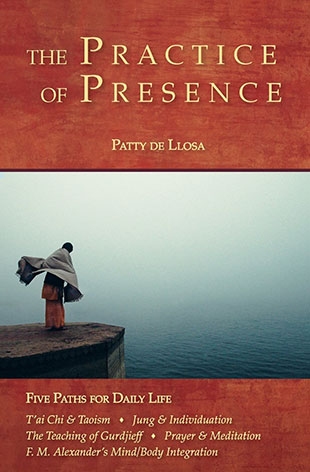"My life has been grounded in the practice of presence in these five traditions. For fifty-five years, I've been a student of Gurdjieff teaching; for more than forty years I've studied and taught T'ai Chi; for thirty years both Jungian studies and the Alexander technique nourished my practice. Prayer and meditation have also sustained me from an early age. From the monk's daily rituals to the Taoist's 'circulation of the light,' many paths include prayer, whether recognized or not by that name, as an intrinsic part of working for presence. Gathering one's attention, putting aside of one's likes and dislikes, and seeking the truth of the inner moment as it is lived right now is a way of saying, as many times a day as one turns inward, 'Lord, not my will, but Thy will be done.'
"Someone recently asked, 'Why do you pursue so many different paths?' My answer: each provides a way for me to return to my authenticity. In Gurdjieffian terminology, each path leads to the development of being rather than merely affirming personality. Although different, the five paths have much in common. Their key concepts are recognizable and sometimes interchangeable. All are a means for centering, for developing conscious awareness, for living in the present, for making contact with what is truer in oneself. They offer practical ways of searching that can bring us to a sense of presence in our daily activities.
"Why, you might ask, is daily work necessary? After all, for a lot of dedicated religious people it's enough to go to church or celebrate Sabbath once a week. That's fine if one spiritual encounter is enough to keep them connected to a larger reality the rest of the week, but for most people, it isn't. Presence must be practiced. Returning repeatedly to contact with our innermost being renews our intention again and again and reminds us of aims we may have temporarily forgotten. It's how we can maintain ourselves within the bandwidth of a connection that fades when we become too preoccupied.
"What exactly is this daily work and how do these paths envisage it?* "Gurdjieff would speak of the work of 'remembering yourself,' the practice of finding a harmonious relationship among your three parts — your head, your body and your feelings — and the study of your personality as differentiated from what is essential in you. The aim: to develop your real 'I,' the master within.
* "The Chinese martial art T'ai Chi Ch'uan invites you to surrender unnecessary physical tension and mental 'gaining' attitudes as you practice a series of flowing movements in an exact, gentle and steady way, as you were pulling a delicate thread of silk slowly from a cocoon without breaking it. The aim: to develop your sense of balance, calmness of mind, rejuvenation.
* "Jung would urge you to become aware of the dark side of your nature, the shadow side that you unconsciously refuse to contemplate, in order to find integration with the larger Self, and your place in the larger context of society. The aim: your individuation as a unique human being.
* "F. M. Alexander would suggest that you study your reactions and your body in movement following his non-judgmental method, to learn how to stop interfering with the primary neuro-physical organization you were born with. The aim: to return to the natural poise and ease which were your rightful inheritance as a small child.
* "And Thomas Merton, Adin Steinsaltz, Rumi, Sri Anirvan, Shunryu Suzuki and other dedicated spiritual leaders point the way to a harvest of joy by opening yourself to the daily availability of the divine through prayer and meditation.”
